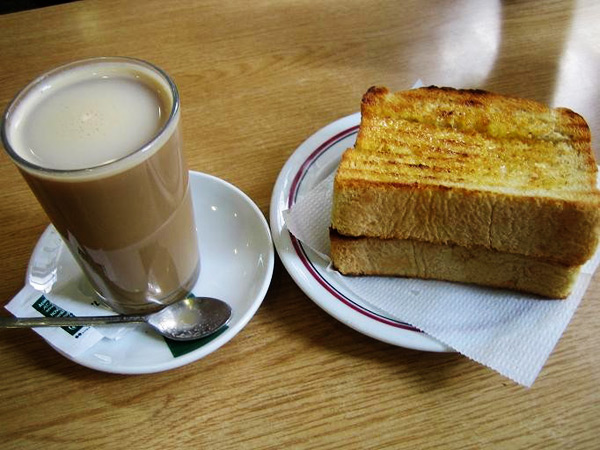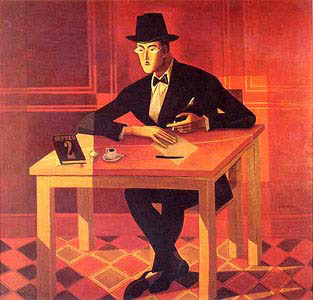As coffee connoisseurs know, coffee is interwoven throughout Portugal’s social, literary and economic history, but coffee has played a much more intimate and personal role in this Portuguese writer’s life.
Coffee is everywhere in Portugal. Every snack bar, bar, diner and restaurant has an espresso machine, so it is not surprising that I was introduced to coffee by my parents at a very young age. Of course, I didn’t get the real espresso shot. My parents watered down my drink – a bit of coffee and double the water – the original Americano, but I didn’t mind drinking espresso’s poor cousin.
To my undeveloped taste buds, the warm watery coffee felt good and tasted sweet and warm and grown up. By the way, I no longer put sugar in my espresso as it masks some of the taste, probably the best part, but as a child I loved it.
For as long as I can remember, meals out with my parents were followed by desert and coffee served by a waiter who always asked us if we’d like a coffee even though he already knew the answer. If you were to dine out today in my country, the waiter would serve you an espresso, but in the old days we got instant coffee; Nescafe, delivered to the table in a small, red tetrahedron (pot), accompanied by a little pouch of sugar, a steaming kettle of hot water and a delicate porcelain cup with “Vista Alegre” stamped on the bottom. (To this day, I like to drink my coffee in Portugal’s finest porcelain).
Don’t get me wrong, even though I was brought up on Nescafe, I don’t consider instant coffee to be coffee, but in Portugal our motto is “Desenrasca” or “Make do with what you have!” Here is our not so secret family recipe for turning instant coffee into an acceptable facsimile of espresso: In a coffee mug, combine a teaspoon of instant coffee with teaspoon of sugar. Mix in a couple of drops of water and stir until the mixture looks like black cake dough. Keep mixing until it turns white, or yellow and then fill with boiling water and behold! By oxygenating the coffee, you end up with a creamy yellow drink with foam on top. The taste is different in a good way!
I really got to know and appreciate coffee in 1998 – the year that Expo was held in Portugal. It was then that I tasted the best coffee in my life. It was from São Tomé, a African country, and it was so amazing that I almost couldn’t eat dinner that evening because I didn’t want the taste of that heavenly espresso to fade!
Soon after that I went to college where I learned far more about coffee than I ever did about academics. It has been said that a Portuguese university is the best place to learn about coffee in the world. It’s true. College for me was a cup of coffee with friends. It was over coffee that we discussed and debated current events, politics, soccer, philosophy, classes, studying, dating, singing, writing poetry and every topic imaginable.
The common name for coffee in most of Portugal is Bica. In Oporto, (home of the famous Port wine), it is called Cimbalinho in reference to the machines used to make it.
What to Expect in a Portuguese Cafe
n Portugal most people don’t have an espresso machine in their house. If you’re entertaining friends you offer them Port wine. If they want a coffee, you invite your guests to go with you to your neighbourhood pastry shop/ coffee shop/ bakery, where coffee is affordable and the atmosphere is relaxing. What can you expect when you get to the coffee shop?
When you enter, the first thing to catch your eye will be a large cabinet containing a coffee grinder and an espresso machine that can make anywhere from four to eight cups of coffee at the same time. Here are the different types of coffee you can order in a Portuguese bar or restaurant:

- Bica: Espresso shot
- Café Pingado: A dripped coffee, served in a beaker with a bit of hot water.
- Café Longo: Similar to a Café Pingado, but taller.
- Galao:A Café Longo with the ratio of 1:3 milk in it. It can be foamed and/or steamed.
- Garoto: Garoto also means “kid” and this drink is mostly milk and a favourite for children. It is made like a Galao but the coffee has been run through twice on the espresso machine and is weaker.
Most people like to order something to accompany their coffee and sometimes that is another drink. Cheirinho isn’t a real drink, but a generic name for spirited drinks that are used to this purpose, like whiskey, brandy and Aguardente.
But probably the most often requested order in a coffee shop is a bica e um pastel de nata, or in English, an espresso and a “pastel de Belém,” served hot with a touch of cinnamon on top and not to be confused with a Pastel de Nata which is served at room temperature.
Although you can order this anywhere in my country, the best place to get a “pastel de nata” is in Belém in Lisbon, where the original recipe is a secret that has been passed down by generations. So popular is this combo that even MacDonald’s offers it, serving the espresso in a porcelain cup – to be returned of course!
What About Prices
The major coffee brands in Portugal are Buondi and Delta. The price for a cup of coffee ranges between 0.40€ ($0.50 USD) to 0.60€, ($0.73 USD).
The combo Café and Pastel goes for 1.10€ ($1.35 USD). A gourmet coffee in a select café will set you back approximately 1.20€. ($2.20 USD), and I promise you it will be worth every penny.
Coffee Culture

Many tourists assume that Portugal is famous only for Vinho do Porto (Port) and they are surprised when they discover that we also have a strong coffee culture that goes back many years. Did you know, for example that Portugal was responsible for introducing coffee production to Brazil?
Portugal’s great historical thinkers had a special place in their hearts for good cup of coffee. Have you ever heard of Fernando Pessoa? He’s the fellow in the painting at the top of this article.
Pessoa is one of the greatest Portuguese poets of all time. His close friend Almada Negreiros, a well-known Portuguese artist painted him sitting in a café with a cup of coffee, his notes and Volume II of his magazine Orpheus.
A bronze of him exists outside the coffee shop he favoured: A Brasileira. Other cafés have been named after famous poets, including the famous Café Nicolla, which boasts its own brand of coffee and was frequented by the famous poet Barbosa de Bocage.
For me, like the poets mentioned above, coffee will always hold a special place in my heart. It has been a constant source of pleasure to me for as long as I can remember.




















